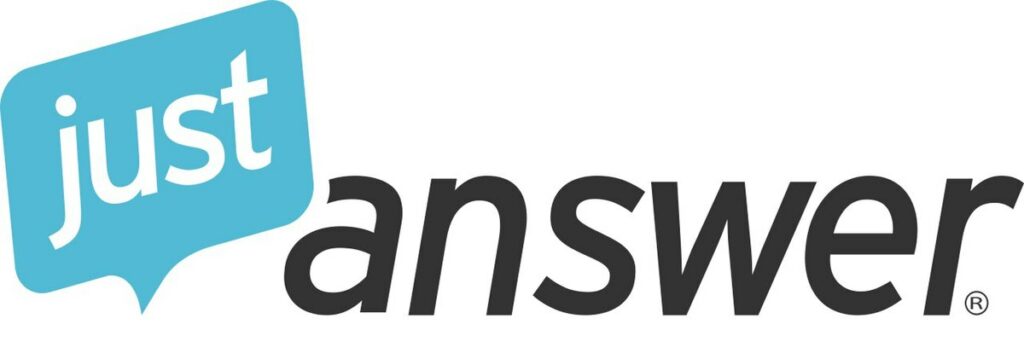I. Introduction to Retirement Planning in the United States
Retirement planning is a crucial process that individuals undertake to ensure a financially secure and fulfilling life after their working years. It involves setting goals, making informed decisions, and implementing strategies to accumulate enough savings and investments to support oneself during retirement. In the United States, where the responsibility for retirement savings largely rests on individuals, understanding the ins and outs of retirement planning becomes even more important.
A. What is retirement planning?
Retirement planning refers to the systematic approach of setting financial goals and making preparations to secure a comfortable lifestyle during the retirement years. It involves assessing one’s financial situation, estimating future expenses, determining the required savings, and implementing strategies to achieve those goals. By planning ahead and taking proactive steps, individuals can ensure they have enough resources to maintain their desired standard of living and enjoy their retirement years to the fullest.
B. Importance of retirement planning
Retirement planning is crucial for several reasons. First and foremost, it allows individuals to maintain their desired lifestyle and financial independence during retirement. Without adequate planning, individuals may face financial hardships, rely solely on social security benefits, or struggle to cover their living expenses.
Moreover, retirement planning provides a sense of security and peace of mind. By having a well-thought-out plan in place, individuals can alleviate concerns about their financial future and have confidence in their ability to handle any unexpected expenses or emergencies that may arise.
C. Overview of retirement options in the United States
In the United States, individuals have various retirement options to consider. The most prominent is Social Security, a government program that provides income to eligible individuals during retirement. Understanding the eligibility criteria, benefits, and limitations of Social Security is essential for effective retirement planning.
Additionally, employer-sponsored retirement plans, such as 401(k) plans, play a significant role in retirement savings. These plans allow employees to contribute a portion of their pre-tax income, often with employer matching contributions. Individual Retirement Accounts (IRAs) are another popular retirement savings vehicle that offers tax advantages.
Furthermore, some individuals may be eligible for pension plans, which are often provided by employers and guarantee a specific income stream during retirement. While less common than in the past, pensions can still be an important component of retirement planning for certain individuals.
D. Common challenges faced during retirement planning
Retirement planning is not without its challenges. One of the primary obstacles individuals face is determining the amount of money needed for retirement. Estimating future expenses, considering factors such as inflation, healthcare costs, and lifestyle choices, can be complex and requires careful consideration.
Another challenge is navigating the various retirement account options and understanding the associated rules and regulations. Choosing the right retirement account, deciding on the appropriate contribution level, and managing investments within these accounts can be overwhelming for many.
Additionally, unexpected life events, such as job loss, health issues, or changes in the economy, can significantly impact retirement plans. Adapting to these unforeseen circumstances and making necessary adjustments to the retirement strategy is essential.
In the upcoming sections of this blog post, we will delve deeper into these topics and provide valuable tips and insights to help individuals navigate the intricacies of retirement planning in the United States. By understanding the importance of retirement planning, exploring the available retirement options, and addressing common challenges, individuals can take proactive steps towards a secure and comfortable retirement.
II. Understanding Retirement Accounts in the United States
Retirement accounts play a pivotal role in retirement planning in the United States. Understanding the different types of accounts and how they work is crucial for individuals looking to secure their financial future. In this section, we will explore the various retirement account options available, including Social Security benefits, 401(k) plans, Individual Retirement Accounts (IRAs), and pension plans.
A. Social Security benefits and eligibility criteria
Social Security is a government program designed to provide income to eligible individuals during retirement. To qualify for Social Security benefits, individuals must have earned sufficient credits through their work history. These credits are earned by paying Social Security taxes on earned income. The amount of Social Security benefits received is based on factors such as the individual’s earnings history, the age at which they start receiving benefits, and the number of years worked.
Understanding the eligibility criteria and the calculation of Social Security benefits is essential for effective retirement planning. It is important to note that while Social Security provides a foundation of income, it is often not sufficient to cover all retirement expenses, making additional retirement savings crucial.
B. 401(k) plans – How do they work?
401(k) plans are employer-sponsored retirement accounts that allow employees to contribute a portion of their pre-tax income towards retirement savings. These contributions are typically deducted directly from an employee’s paycheck, making it a convenient and automatic way to save for retirement. Many employers also offer a matching contribution, where they contribute a certain percentage of the employee’s contribution, up to a specified limit.
One of the key advantages of 401(k) plans is the tax benefits they offer. Contributions are made on a pre-tax basis, meaning they are not subject to income tax at the time of contribution. Instead, taxes are deferred until withdrawals are made during retirement. This allows for potential tax savings and the opportunity for contributions to grow tax-free over time.
401(k) plans often offer a range of investment options, such as mutual funds or target-date funds, allowing individuals to tailor their investments to their risk tolerance and retirement goals. It is important to review and adjust investment allocations periodically to ensure they align with changing circumstances and financial objectives.
C. Individual Retirement Accounts (IRAs) – Types and benefits
Individual Retirement Accounts (IRAs) are personal retirement accounts that individuals can set up on their own, independent of their employers. IRAs offer tax advantages similar to 401(k) plans, but with some differences in contribution limits and eligibility criteria.
There are two main types of IRAs: Traditional IRAs and Roth IRAs. Traditional IRAs allow individuals to make tax-deductible contributions, which can reduce their taxable income for the year. However, withdrawals during retirement are subject to income tax. On the other hand, Roth IRAs are funded with after-tax contributions, meaning contributions are not tax-deductible. However, qualified withdrawals from Roth IRAs, including both contributions and earnings, are tax-free.
IRAs provide individuals with flexibility and control over their retirement savings. They offer a wide range of investment options, including stocks, bonds, mutual funds, and more. It is important to consider factors such as investment fees, risk tolerance, and retirement goals when selecting investments within an IRA.
D. Pension plans – An overview
Pension plans, also known as defined benefit plans, are retirement plans offered by some employers. These plans guarantee a specific income stream during retirement based on factors such as salary history, years of service, and a predetermined formula. Pension plans are becoming less common in the private sector but are still prevalent in certain industries and for government employees.
Pension plans provide retirees with a reliable source of income, as the employer bears the investment risk and ensures a regular payment throughout retirement. However, eligibility and benefit calculations vary depending on the specific plan and employer. It is important for individuals covered by pension plans to understand the plan’s terms, vesting requirements, and payout options.
In summary, understanding the different retirement accounts available in the United States is crucial for effective retirement planning. Social Security benefits, 401(k) plans, IRAs, and pension plans each have their own rules, benefits, and considerations. By familiarizing oneself with these options, individuals can make informed decisions and create a well-rounded retirement savings strategy.
III. Strategies for Effective Retirement Planning
Planning for retirement involves more than just saving money. It requires a thoughtful approach and the implementation of effective strategies to ensure that one’s financial goals are met. In this section, we will explore key strategies that can help individuals plan for a successful retirement.
A. Setting realistic retirement goals
The first step in effective retirement planning is setting realistic and achievable goals. This involves considering factors such as the desired retirement age, desired lifestyle, and anticipated expenses during retirement. By having a clear vision of what one wants to achieve in retirement, it becomes easier to develop a comprehensive plan to reach those goals.
When setting retirement goals, it is important to consider both short-term and long-term objectives. Short-term goals may include paying off outstanding debts or saving for a specific expense, while long-term goals may focus on building a retirement nest egg or funding major life events during retirement. By breaking down goals into manageable milestones, individuals can track their progress and make adjustments as needed.
B. Estimating retirement expenses
Estimating retirement expenses is a crucial aspect of retirement planning. It involves projecting the amount of money needed to cover living expenses, healthcare costs, leisure activities, and any other anticipated expenditures during retirement. Estimating expenses can be challenging, as they may fluctuate over time and vary based on individual circumstances.
To estimate retirement expenses, individuals can start by reviewing their current spending patterns and making adjustments for anticipated changes in retirement. It is important to consider factors such as inflation, healthcare costs, and potential changes in lifestyle. Consulting with financial advisors, using online tools, and seeking guidance from professionals can provide valuable insights and help in creating a realistic expense estimate.
C. Calculating retirement savings needs
Once retirement goals and estimated expenses are determined, the next step is to calculate the savings needed to achieve those goals. This involves assessing the gap between current savings and the desired retirement nest egg. By considering factors such as investment returns, time horizon, and desired retirement age, individuals can determine how much they need to save on a regular basis to reach their goals.
Various retirement calculators and online tools are available to assist individuals in calculating their retirement savings needs. These tools take into account factors such as inflation, investment returns, and retirement age to provide an estimate of the required savings. Regularly reviewing and adjusting these calculations can help individuals stay on track and make necessary adjustments to their savings plan.
D. Creating a retirement savings plan
Creating a retirement savings plan is the final step in effective retirement planning. This involves developing a comprehensive strategy to accumulate the necessary savings to achieve retirement goals. The plan should outline how much should be saved on a regular basis, the investment vehicles to be utilized, and the timeline for reaching retirement goals.
One key aspect of a retirement savings plan is maximizing contributions to retirement accounts such as 401(k) plans and IRAs. Taking advantage of employer matching contributions and contributing the maximum allowable amount can significantly boost retirement savings over time. Additionally, diversifying investments and regularly reviewing and rebalancing the portfolio can help mitigate risks and maximize long-term growth potential.
It is important to regularly revisit and adjust the retirement savings plan as circumstances change, such as changes in income, expenses, or retirement goals. Seeking guidance from financial advisors or retirement specialists can provide valuable insights and help individuals tailor their savings plan to their unique circumstances.
In conclusion, effective retirement planning requires the implementation of key strategies to ensure a secure and comfortable retirement. By setting realistic goals, estimating expenses, calculating savings needs, and creating a comprehensive savings plan, individuals can take control of their financial future and work towards a fulfilling retirement. Remember, the earlier one starts planning and saving for retirement, the greater the potential for long-term success.
IV. Tips for Maximizing Retirement Savings
Maximizing retirement savings is a critical aspect of effective retirement planning. By implementing smart strategies and making informed decisions, individuals can optimize their savings and enhance their financial security during retirement. In this section, we will explore valuable tips to help individuals maximize their retirement savings.
A. Starting early – The power of compound interest
One of the most powerful strategies for maximizing retirement savings is to start saving as early as possible. The power of compound interest allows savings to grow exponentially over time. By starting early, individuals can take advantage of the compounding effect, where the returns on investments generate additional returns, leading to significant growth in the long run.
Even small contributions made early on can have a substantial impact on overall retirement savings. The longer the investment horizon, the more time investments have to grow and accumulate wealth. Therefore, it is important to start saving for retirement as soon as possible, even if the contributions are modest in the beginning.
B. Taking advantage of employer-sponsored retirement plans
Employer-sponsored retirement plans, such as 401(k) plans, offer a valuable opportunity to maximize retirement savings. These plans often come with employer matching contributions, where the employer matches a percentage of the employee’s contributions, up to a certain limit. Taking full advantage of employer matching contributions is crucial, as it is essentially free money that can significantly boost retirement savings.
Additionally, contributing the maximum allowable amount to employer-sponsored plans can provide tax advantages, as contributions are made on a pre-tax basis. This reduces the individual’s taxable income, potentially resulting in lower tax liabilities. It is important to review the plan’s rules and contribution limits to ensure optimal utilization of these benefits.
C. Making regular contributions to retirement accounts
Consistency is key when it comes to retirement savings. Making regular contributions to retirement accounts, whether through employer-sponsored plans or individual retirement accounts (IRAs), is essential for building a substantial nest egg. Setting up automatic contributions can help individuals stay on track and ensure that savings are consistently being allocated towards retirement.
Even during times of financial uncertainty or market volatility, it is important to continue contributing to retirement accounts. Staying the course and maintaining a consistent savings habit can help individuals weather short-term fluctuations and benefit from long-term growth potential.
D. Diversifying investment options for long-term growth
Diversification is a critical aspect of maximizing retirement savings. By spreading investments across various asset classes, such as stocks, bonds, and real estate, individuals can mitigate risk and maximize long-term growth potential. Diversifying investments helps protect against the volatility of any single investment and allows individuals to benefit from different market conditions.
Maintaining a well-balanced portfolio that aligns with one’s risk tolerance and retirement goals is crucial. Regularly reviewing and rebalancing the portfolio ensures that investments are in line with the individual’s changing circumstances and long-term objectives.
It is important to note that while diversification can help manage risk, it does not guarantee profits or protect against losses. Working with a financial advisor or retirement specialist can provide valuable insights and guidance in creating a diversified investment strategy tailored to individual needs.
In conclusion, maximizing retirement savings requires a combination of smart strategies and disciplined saving habits. By starting early, taking advantage of employer-sponsored plans, making regular contributions, and diversifying investments, individuals can optimize their retirement savings and enhance their financial well-being during their golden years. Remember, every dollar saved and invested today can make a significant difference in building a secure and comfortable future.
V. Planning for a Secure Retirement
Planning for a secure retirement involves more than just accumulating savings. It requires individuals to consider various aspects that can impact their financial well-being and peace of mind during their retirement years. In this section, we will explore important considerations for planning a secure retirement.
A. Managing debt and reducing financial obligations
One crucial step in planning for a secure retirement is managing debt and reducing financial obligations. Carrying high levels of debt into retirement can significantly impact one’s financial flexibility and ability to meet retirement expenses. It is important to develop a plan to pay off debts, such as credit card debt, student loans, or mortgages, before entering retirement.
By tackling debt early and making consistent payments, individuals can reduce interest costs and free up more resources for retirement savings. Creating a budget, prioritizing debt repayment, and seeking professional advice if needed can help individuals develop a realistic plan to become debt-free before retirement.
B. Healthcare considerations during retirement
Healthcare expenses are a significant component of retirement expenses and can have a substantial impact on overall financial well-being. It is crucial to consider healthcare costs when planning for a secure retirement. Medicare, the federal health insurance program for individuals aged 65 and older, plays a vital role in providing healthcare coverage during retirement. Understanding the different parts of Medicare, enrollment periods, and potential costs is essential for effective retirement planning.
Additionally, it is advisable to explore supplemental health insurance plans, such as Medicare Advantage or Medigap policies, to fill the gaps in Medicare coverage. These policies can help individuals manage out-of-pocket expenses, prescription drug costs, and other healthcare needs.
Long-term care is another important consideration. Long-term care refers to the assistance needed for individuals with chronic illnesses, disabilities, or other conditions that limit their ability to perform daily activities independently. Long-term care insurance can help cover the costs of nursing homes, assisted living facilities, or in-home care services. Planning for long-term care in advance can help protect retirement savings and provide peace of mind.
C. Long-term care insurance and planning
Long-term care insurance is an insurance product specifically designed to provide coverage for long-term care services. It helps protect individuals’ assets and retirement savings from the potentially high costs of long-term care, which can deplete savings quickly. By purchasing long-term care insurance, individuals can ensure they have the necessary financial resources to cover future care needs.
When considering long-term care insurance, it is important to assess individual needs, compare policies, and carefully review coverage options and limitations. Factors such as age, health, family history, and financial resources should be taken into account when deciding on the appropriate coverage. Consulting with an insurance professional can provide valuable insights and guidance in selecting the right long-term care insurance policy.
D. Estate planning and leaving a legacy
Estate planning is another crucial element of planning for a secure retirement. Estate planning involves documenting one’s wishes regarding the distribution of assets, appointing guardians for dependents, and minimizing estate taxes and probate costs. It ensures that individuals have control over their assets and that their wishes are carried out after their passing.
Creating a comprehensive estate plan may include drafting a will, establishing trusts, designating beneficiaries, and assigning power of attorney and healthcare directives. It is important to regularly review and update the estate plan as circumstances change, such as marriage, the birth of children, or acquiring new assets.
Leaving a legacy is a personal choice that individuals may consider as part of their retirement planning. This can involve charitable giving, setting up educational funds, or creating trusts for future generations. Planning for a legacy allows individuals to make a lasting impact and ensure their values and beliefs continue beyond their lifetime.
In conclusion, planning for a secure retirement involves considering various aspects beyond savings accumulation. By managing debt, considering healthcare expenses, exploring long-term care insurance, and engaging in estate planning, individuals can enhance their financial security and leave a legacy for future generations. Taking a comprehensive approach to retirement planning ensures a more secure and fulfilling retirement journey.
VI. Resources and Tools for Retirement Planning
Retirement planning can be a complex process, and individuals may require additional resources and tools to navigate the various aspects involved. In this section, we will explore different resources and tools available to assist individuals in their retirement planning journey.
A. Online retirement calculators and tools
Online retirement calculators are valuable resources that can help individuals assess their current financial situation, estimate retirement expenses, and determine their savings needs. These calculators often consider factors such as current savings, expected investment returns, inflation, and retirement age to provide a projection of retirement income and savings goals. They can serve as a starting point for individuals to evaluate their progress and make adjustments to their retirement savings plan.
Various financial institutions, retirement planning websites, and government agencies offer retirement calculators that are user-friendly and provide valuable insights. Some calculators even allow individuals to experiment with different scenarios, such as adjusting retirement age or contribution amounts, to see the potential impact on their retirement savings.
B. Books and educational resources on retirement planning
Books and educational resources on retirement planning can provide in-depth knowledge and guidance to individuals seeking to enhance their understanding of the subject. These resources cover a wide range of topics, including retirement strategies, investment options, healthcare considerations, and estate planning.
Retirement planning books authored by financial experts and retirement specialists often provide valuable insights, practical tips, and case studies to help individuals navigate the complexities of retirement planning. They can serve as a comprehensive reference guide and a source of inspiration for individuals looking to take control of their financial future.
In addition to books, educational resources such as online articles, blogs, podcasts, and webinars offer valuable information on retirement planning. These resources often provide up-to-date insights and address common retirement planning questions and concerns. Engaging with educational content can equip individuals with the knowledge necessary to make informed decisions and implement effective retirement strategies.
C. Professional financial advisors and retirement specialists
For individuals who prefer personalized guidance and expertise, seeking the assistance of professional financial advisors and retirement specialists can be invaluable. These professionals have the knowledge and experience to provide tailored advice and create customized retirement plans based on individual circumstances and goals.
Financial advisors can help individuals assess their current financial situation, develop a retirement savings plan, and provide ongoing guidance and support. They can also assist in managing investments, optimizing tax strategies, and ensuring that retirement goals are on track.
Retirement specialists, often certified financial planners (CFPs) or retirement planning experts, specialize in retirement planning and can provide comprehensive guidance on various retirement-related topics. They can help individuals navigate Social Security benefits, evaluate pension options, and develop strategies to maximize retirement income.
D. Government resources and programs for retirees
Government resources and programs can provide additional support and assistance to retirees. The U.S. government offers a range of resources and programs aimed at helping individuals in their retirement planning journey.
The Social Security Administration (SSA) is a primary resource for individuals seeking information about Social Security benefits. The SSA website provides detailed information about eligibility criteria, benefit calculations, and the application process. Individuals can also create an online account to access personalized benefit statements and estimate future benefits.
The Department of Labor’s Employee Benefits Security Administration (EBSA) offers resources and information related to retirement plans, including guidance on understanding and managing employer-sponsored retirement plans such as 401(k) plans.
Additionally, the Internal Revenue Service (IRS) provides information on retirement-related tax considerations and rules regarding retirement accounts. The IRS website offers publications, forms, and tools to help individuals navigate tax implications related to retirement savings and withdrawals.
By leveraging these government resources, individuals can gain a better understanding of their rights, entitlements, and obligations related to retirement planning.
In conclusion, resources and tools play a significant role in supporting individuals throughout their retirement planning journey. Online retirement calculators, books, educational resources, professional financial advisors, retirement specialists, and government programs provide valuable insights, guidance, and support to help individuals make informed decisions and create a secure and fulfilling retirement plan.










